QUESTION 1 All of the following are emerging infectious dise
QUESTION 1
All of the following are emerging infectious diseases, except:
A.HIV/AIDS
B. SARS
C. Nipah virus
D. Hepatitis B
QUESTION 2
As a country becomes healthier, what is most likely to happen regarding childhood mortality?
A. Neonatal mortality decreases while under-5 mortality remains the same
B. Neonatal deaths account for a larger share of under-5 mortality
C. Both neonatal mortality and under-5 mortality remain the same
D. Neonatal deaths account for a smaller share of under-5 mortality
QUESTION 3
Early adolescence is defined as the period between:
A. Ages 9 and 11
B. Ages 9 and 16
C. Ages 10 and 12
D. Ages 10 and 14
QUESTION 4
Key factors contributing to the emergence and re-emergence of infectious diseases include:
A. War and famine
B. Microbial adaptation and change
C. Breakdown of public health measures
D. All of these are correct.
QUESTION 5
Of the leading causes of DALYs for adolescents aged 10–14 years, which is not a leading cause for adolescents aged 15–19 years?
A. Asthma
B. Diarrheal disease
C. Road injury
D. Diarrheal disease and road injury
QUESTION 6
Reducing the incidence of a disease in a specific area to zero is termed:
A. Elimination
B. Control
C. Eradication
D. Extinction
QUESTION 7
What are common mental health problems among adolescents?
A. Conduct disorders
B. Anxiety
C. Depression
D. All of these are correct.
QUESTION 8
What causes the most neonatal deaths globally?
A. Preterm birth complications
B. Malaria
C. Sepsis
D. Pneumonia
QUESTION 9
What is not a consequence or complication of vitamin A deficiency?
A. Asphyxia
B. Xerophthalmia
C. Immune system compromise
D. Measles
QUESTION 10
What is not a leading cause of death among adolescents in high-income countries?
A. Self-harm
B. Lower respiratory infections
C. Road injury
D. Interpersonal violence
QUESTION 11
What is the most cost-effective intervention in low-resource settings to treat diarrhea and prevent its complications and mortality?
A. Consumption of large quantities of water
B. Oral rehydration therapy
C. Antibiotic treatment
D. Intravenous fluid administration
QUESTION 12
Which WHO region has the highest percentage of adolescents who are current drinkers?
A. Africa
B. Western Pacific
C. Europe
D. South-East Asia
QUESTION 13
Which intervention is the most appropriate, cost-effective measure for caring for stable, low birthweight infants in very resource-limited settings?
A. Kangaroo mother care
B. Neonatal incubator
C. Feeding through a nasogastric tube
D. None of these are correct.
QUESTION 14
Which of the following statements about HIV/AID is false?
A. New HIV infections occur predominantly in people ages 15–24.
B. Circumcised males are less likely to be infected with HIV than uncircumcised males.
C. Cambodia faces a generalized epidemic of HIV/AIDS.
D. The highest rates of prevalence are in Central, Eastern, and Southern Africa.
QUESTION 15
Which region has seen the largest percentage decline in under-5 mortality since 1990?
A. Sub-Saharan Africa
B. Latin America and the Caribbean
C. South Asia
D. Middle East and North Africa
QUESTION 16
Which statement about the burden of childhood illness in the under-5 age group is true?
A. South Asia has the highest rates of under-5 mortality.
B. Almost half of the under-5 mortality occurs in only four large countries.
C. About 80% of the under-5 deaths occur among neonates.
D. The rate of under-5 mortality in sub-Saharan Africa is about 25 times that in high-income countries.
QUESTION 17
Which statement about the prevention and treatment of HIV/AIDS is true?
A. One cost-effective measure to reduce maternal-to-child transmission of HIV is to avoid unwanted pregnancies of HIV-positive women through contraception.
B. It is no longer necessary to screen voluntary blood donors for HIV/AIDS because the storage process kills the virus in the blood.
C. People with HIV are started on treatment when their CD4 count drops to 200, according to the latest WHO guidelines.
D. Needle exchange programs for injecting drug users have not shown much success in reducing the incidence of HIV infection.
QUESTION 18
Which statement about the prevention and treatment of TB is false?
A. DOTS is a cost-effective approach to TB treatment.
B. WHO recommends starting antiretroviral therapy for anyone who is HIV-positive who has TB.
C. Any responsible individual can be a DOTS provider.
D. The BCG vaccine is important in reducing the transmission of TB.
QUESTION 19
Anxiety disorders are a leading cause of DALYs among:
A. Females, ages 10–14
B. Males, ages 10–14
C. Males, ages 15–19
D. Females, ages 15–19
QUESTION 20
Case fatality rate is:
A. The proportion of people exposed to a disease that contract the disease
B. The proportion of people with a disease that die
C. The proportion of people with a disease that die from the disease
D. The proportion of people infected with a disease that survive the disease
Solution
1. Hepatitis B.
Emerging infectious diseases are those diseases that are causes by new pathogens or new strains of a pathogen, and that might have evolved from a known infection. EIDs are new infectious that have appeared recently in the time scale within a population or their incidence or geographic range is rapidly increasing.
3. Early adoloscence is between the ages 10 - 14. correct answer is option D.
4. D. All of the above are correct.
5. A. Asthma
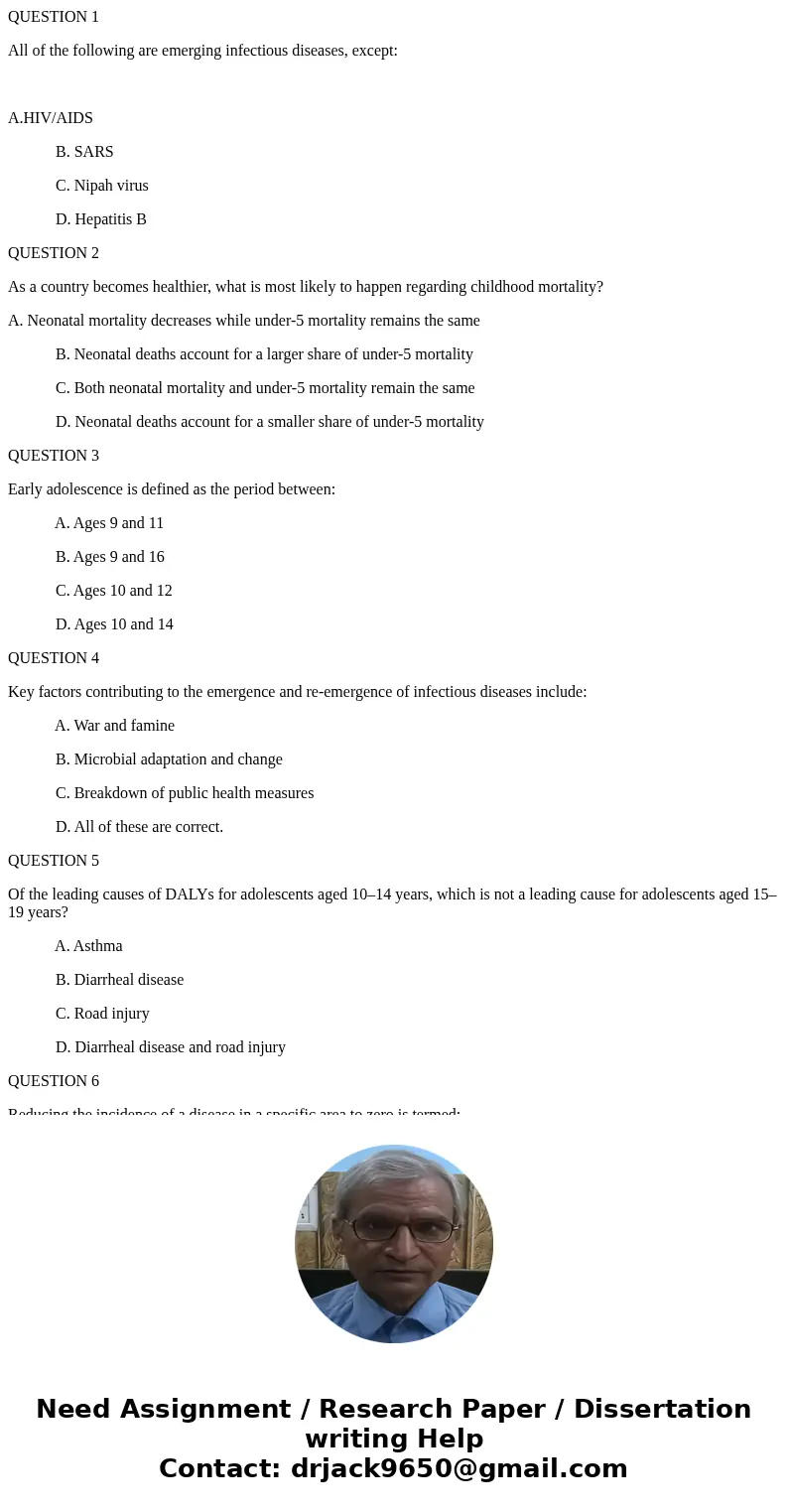
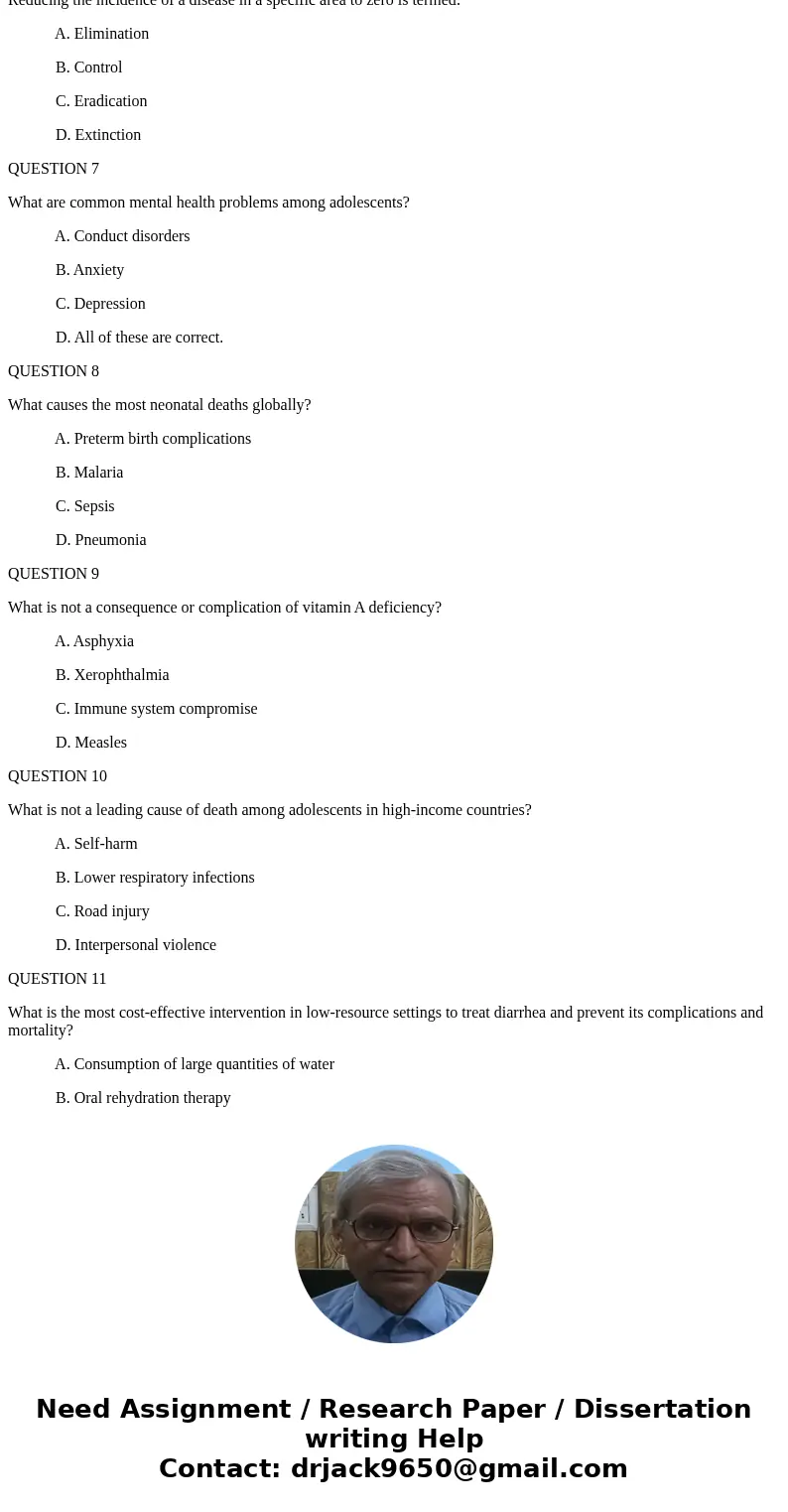
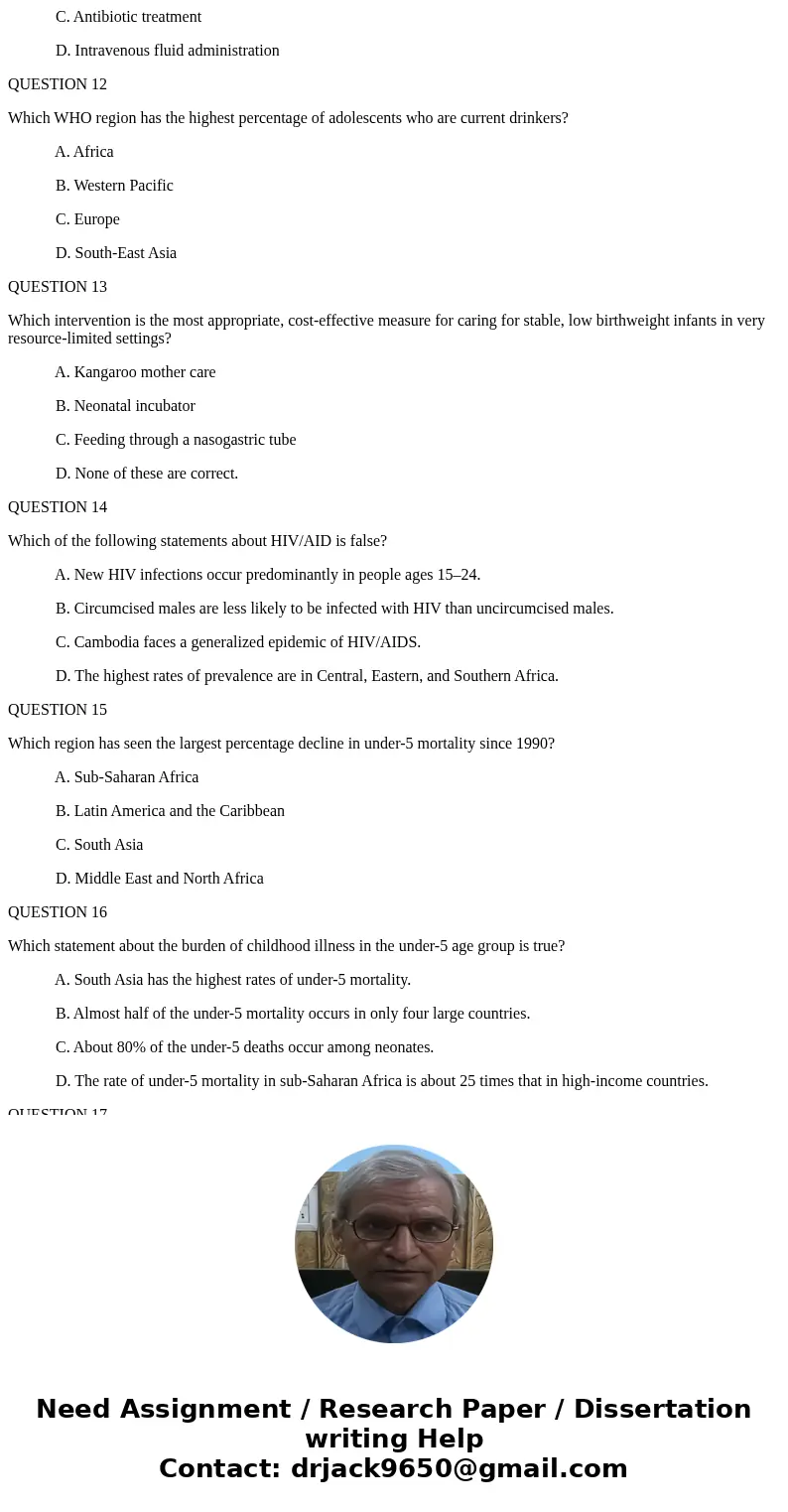
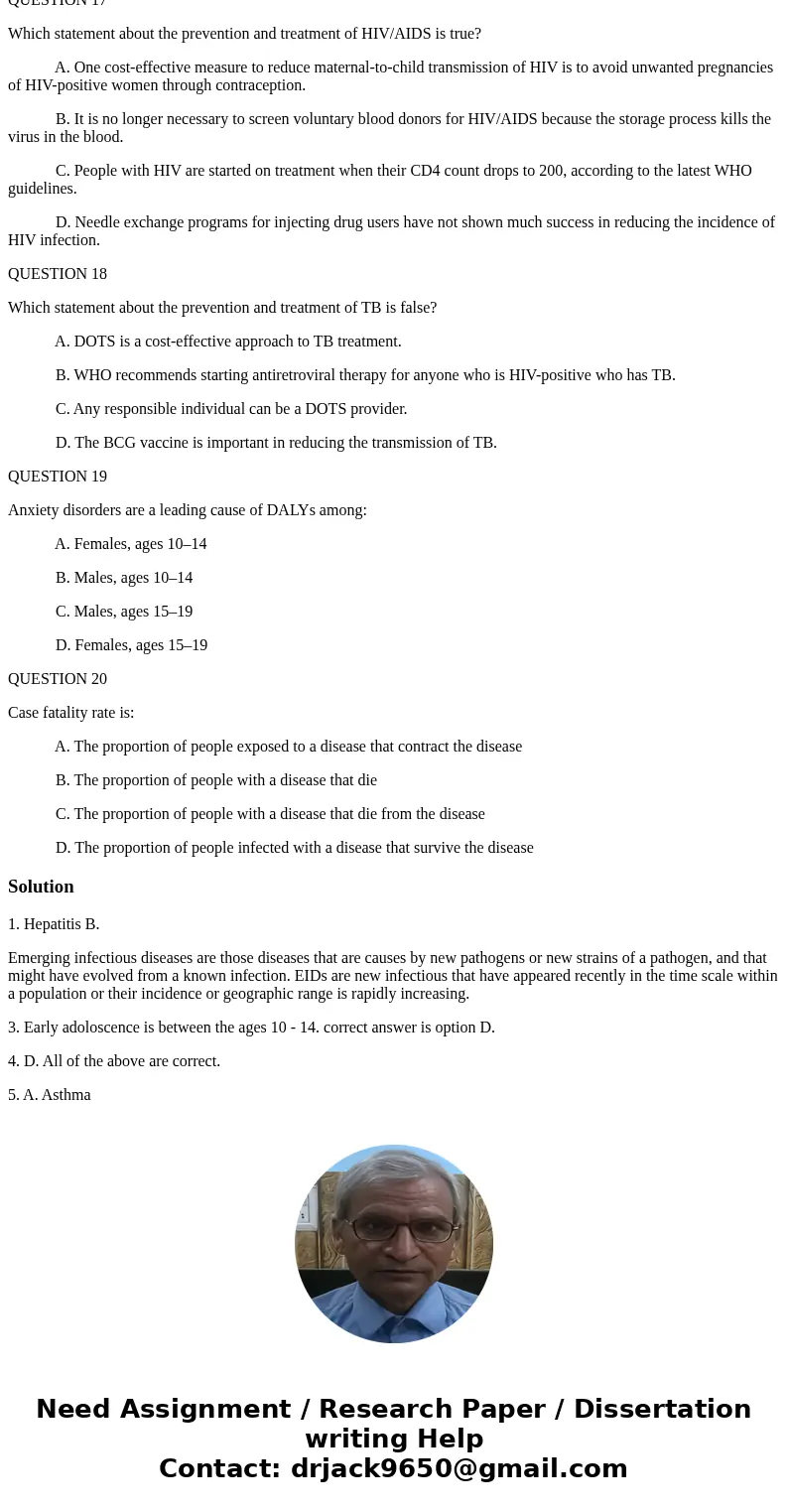
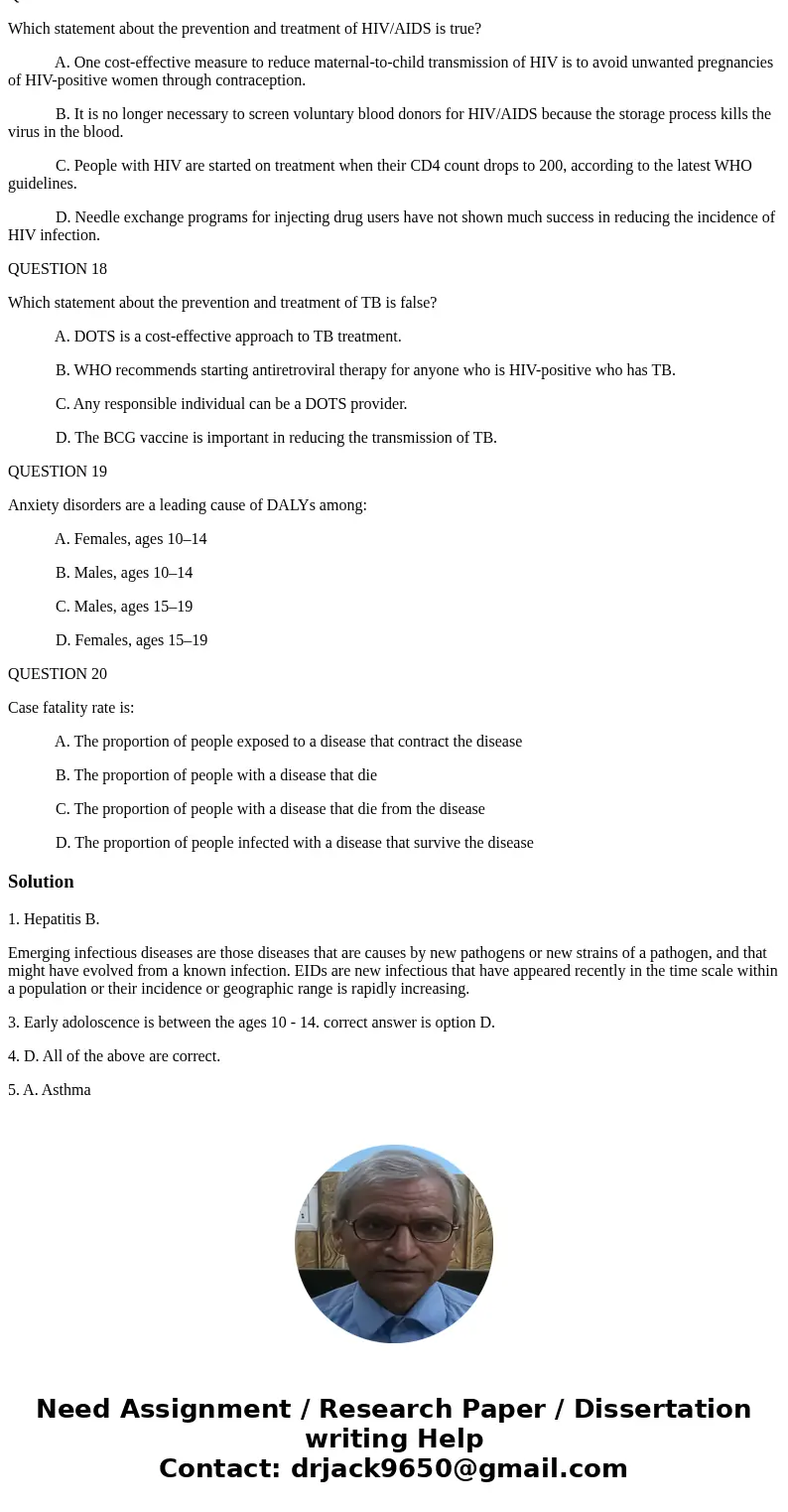
 Homework Sourse
Homework Sourse